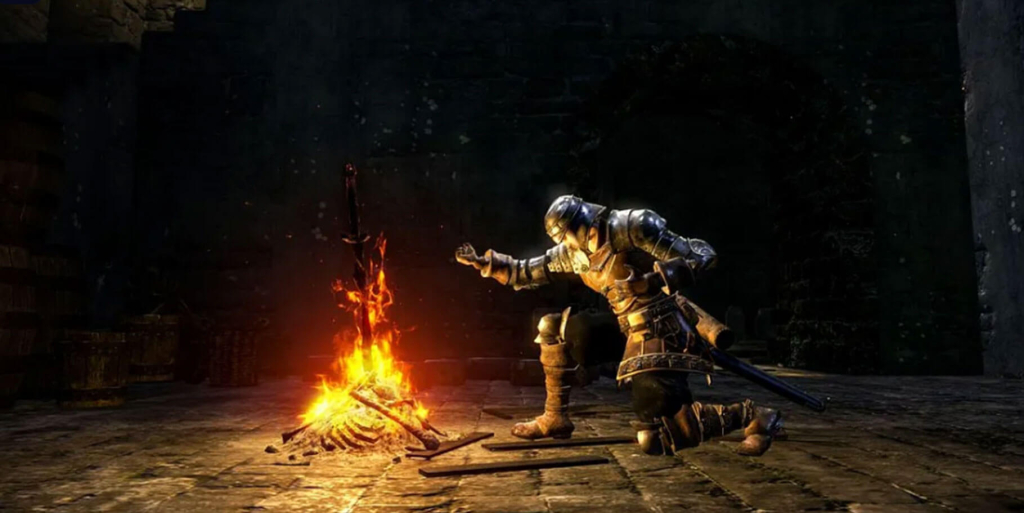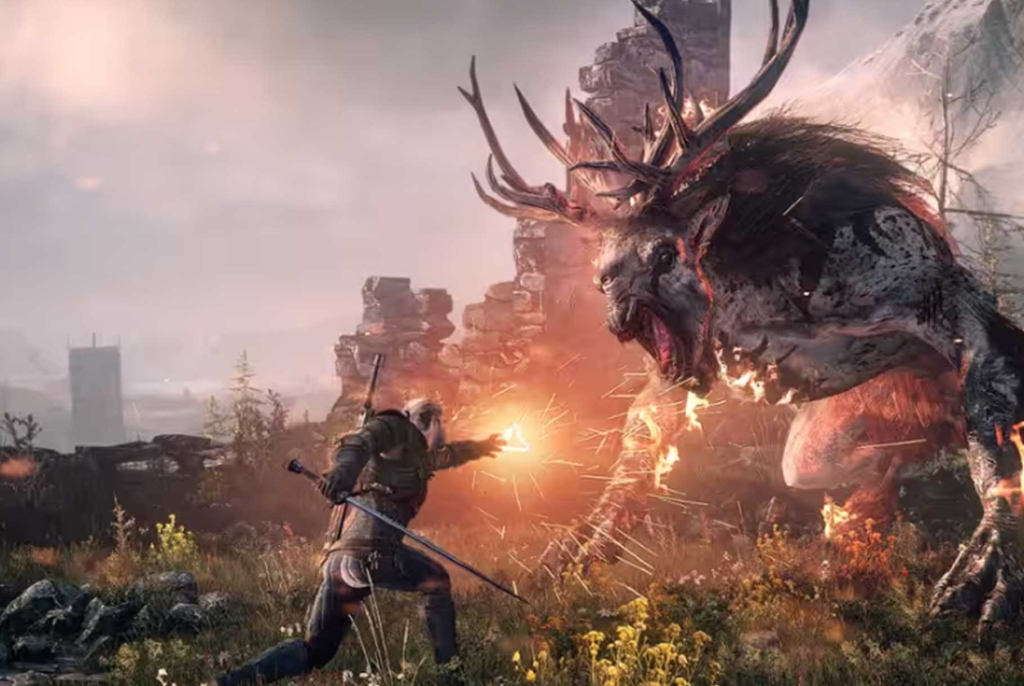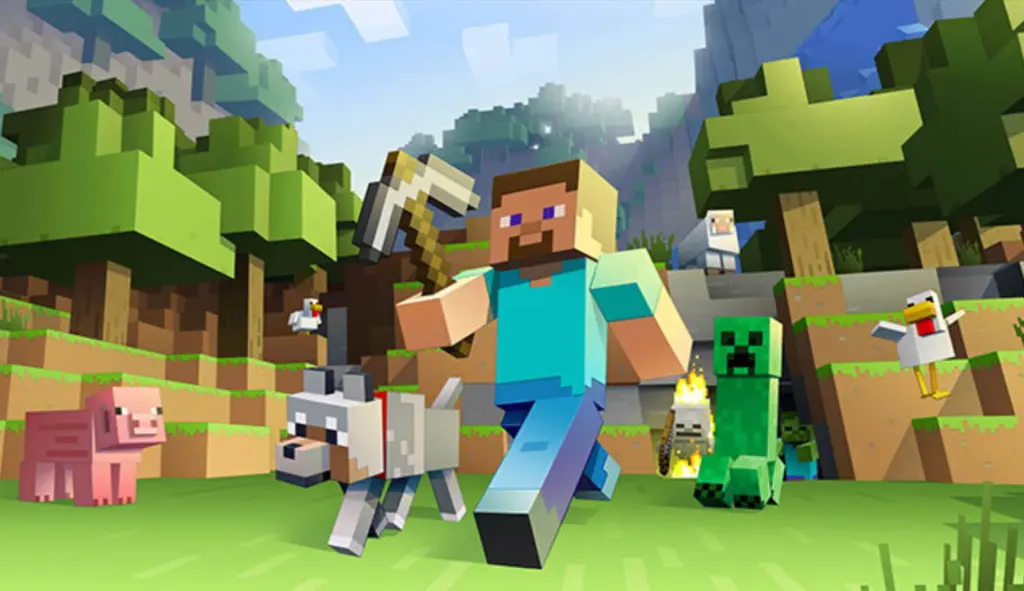Table of Contents
What makes a game truly memorable? Is it the amazing story, the fun gameplay, or the beautiful graphics? Ultimately, a game’s success depends on how well its design elements work together. These elements of game design create the player’s whole experience. Learning about these video game elements is key to making games that really shine in today’s market.
Game design is a fascinating blend of art and science! It’s all about creating fun and engaging interactive experiences that players will love. This involves combining creativity, understanding people’s thinking, and some serious technical skills to make genuinely captivating games. At its essence, game design entails formulating the rules, mechanics, and systems that underpin gameplay, ensuring that these components function cohesively to provide a captivating experience for players.
Effective game design is fundamental to successful gaming projects, ensuring both player satisfaction and profitability. It transforms simple concepts into memorable player experiences that stand out in today’s competitive market. Leading game design companies emphasize creating strong design foundations that result in lasting player engagement through a balanced challenge and reward system, fostering player investment. This thoughtful approach promotes deep immersion within compelling worlds and narratives. Furthermore, it significantly improves market performance, positively influencing player acquisition and retention.
Game mechanics are the fundamental framework through which players interact with the game world. Game mechanics encompass everything from basic movement controls to complex combat systems, resource management, and interaction rules. In order to create a deep and intuitive gameplay experience, these mechanics must be carefully designed.
The true art lies in making these mechanics feel natural while providing enough depth for mastery. This involves carefully considering how different mechanics interact, the timing and precision required for execution, and how they contribute to the overall gameplay loop. Every mechanic should serve a purpose, whether advancing the story, creating challenges, or providing players with tools for expression. These mechanics are key elements of a video game that shape the overall experience.

For example, in Portal, the simple mechanic of creating two interconnected portals revolutionized puzzle design by offering players a new way to think about spatial relationships and momentum. This single mechanic created countless possibilities for creative problem-solving while remaining intuitive. The “jump” concept in platformers like Super Mario Bros. is another excellent example; it’s straightforward but incredibly captivating, offering countless chances for difficulty and expertise.
Objectives and goals serve as the driving force behind player motivation. TThey give gameplay activities direction and structure, turning random actions into meaningful advancement. Well-crafted goals provide players a feeling of direction while also granting them the freedom to approach them anyway they see fit.
Establishing a balanced goal hierarchy is essential to designing objectives that work. While long-term goals give gamers something to strive for over longer periods of time, short-term aims offer instant reward and sustain engagement. These objectives must be understandable, attainable, and sufficiently rewarding to warrant the necessary work.

Consider Red Dead Redemption 2, where the main plot missions serve as the primary narrative drive, while smaller tasks such as hunting and camp upgrades provide fascinating diversions that add to the overall experience without taking away from the main story. Another example of excellent gaming objectives and goals is The Legend of Zelda: Breath of the Wild, where players are entrusted with rescuing Hyrule, which serves as a compelling long-term goal while also providing several side missions for further involvement.
Player agency goes beyond simple choice-making – it’s about giving players meaningful control over their experience. This includes how they approach challenges, develop their character, interact with the world, and influence the story. True agency means that players’ choices have genuine consequences and impact on the game world.
Effective player agency requires careful balance between freedom and structure. While too much structure might make decisions seem pointless, too much freedom can result in aimlessness. The secret is to design a framework that preserves cohesive gameplay and narrative experiences while giving users’ choices a sense of significance. One of the most crucial elements of a video game is player agency, which influences how users interact with the plot and the environment.

This is best demonstrated by games such as Mass Effect, which provide players choices that impact both short-term circumstances and long-term plot points, giving them the impression that their choices actually have an impact on how they play the game.
Progression systems are the backbone of player engagement, providing tangible measurements of advancement and achievement. A well-designed progression system creates a sense of growth and accomplishment while maintaining player interest through carefully paced rewards.
Effective progression design requires understanding both explicit rewards (like new abilities or items) and implicit rewards (such as mastery of game systems or story revelations). The timing and distribution of these rewards should maintain a steady flow of satisfaction while avoiding both overwhelming abundance and frustrating scarcity. Additionally, progression should be closely tied to character design, ensuring that as players advance, their characters evolve in ways that are meaningful and visually representative of their journey.

Monster Hunter series demonstrates this through its gear crafting system, where each new piece of equipment represents both a tangible power increase and a trophy of player achievement, creating a compelling loop of challenge and reward. Another example is Fortnite, where players are driven by the battle pass system that rewards progress with exclusive skins and emotes.
Game balance is about creating challenges that feel fair and rewarding while maintaining player engagement. This involves not just tuning difficulty levels, but understanding how different game elements interact and how players of varying skill levels will experience the content.
Proper difficulty balancing requires considering multiple factors:

Celeste exemplifies excellent difficulty design by offering intense challenges while providing accessibility options that let players adjust various gameplay elements without compromising the core experience. Even, Dark Souls is renowned for its challenging yet fair gameplay, which keeps players returning for more.
Feedback mechanisms serve as the vital communication bridge between the game and the player, orchestrating a complex system of responses that enhance understanding and immersion. These systems go far beyond simple visual or audio cues, creating a comprehensive language that speaks to players through multiple sensory channels simultaneously.
When designed effectively, feedback mechanisms create an intuitive understanding of the game world without requiring explicit instruction. Players should naturally grasp the consequences of their actions through a carefully crafted combination of visual effects, sound design, and haptic responses. This multilayered approach ensures that players receive critical information without breaking their immersion in the game world.
The sophistication of modern feedback systems lies in their ability to convey information at different temporal scales. Immediate feedback provides instant gratification and clear communication about the success or failure of actions, while ongoing feedback helps players understand their current state and progress. Long-term feedback mechanisms track overall advancement and achievement, giving players a sense of their journey through the game.

For instance, in Overwatch, the feedback system creates a complex yet instantly readable battlefield environment. Every ability activation, damage dealt, and healing received is communicated through a carefully orchestrated combination of visual effects, sound cues, and interface elements. This layered approach ensures that players can track crucial information even in the midst of chaotic team fights.
Video game narrative and immersion offer a distinctive storytelling style that goes beyond the bounds of conventional media. Games have the rare capacity to engage players as active participants in the narrative, producing experiences that react and change based on their decisions and actions, unlike books or movies. This interactive storytelling requires a delicate balance between authored narrative and player agency.
The most effective game narratives weave their stories through every aspect of the game world. Environmental details, character interactions, and even gameplay mechanics all contribute to the broader narrative tapestry. This holistic approach to storytelling creates deeper immersion by ensuring that every element of the game serves the overall narrative purpose while maintaining player engagement.
Games’ world-building demands a special focus on consistency and detail. In order to create a convincing environment that players can immerse themselves in, every component of the game world needs to feel connected and purposeful. This extends beyond visual design to include the logic of the world, its history, and how various systems and characters interact within it. Every element of the story and world-building when designing a video game aims to improve the player’s experience.

Complex narratives and deep character development draw players in in video games such as The Witcher 3: Wild Hunt. Another excellent illustration of this all-encompassing approach to narrative design is BioShock. Through exploration and discovery, the game’s plot develops organically. Rapture’s sad past is revealed through gaming mechanisms, audio logs, and environmental narration. This integration of narrative elements of game design creates a deeply immersive experience where story and gameplay elements are inseparable.
Visual and audio design in games transcend pure aesthetics to become fundamental tools for communication and immersion. These elements of game design work in concert to create atmospheric environments, guide player attention, and convey crucial gameplay information. The most successful games seamlessly integrate visual and audio elements that enhance functionality and emotional impact.
In order to create a game’s identity and aid players in comprehending its universe, art direction is essential. Every visual decision, including color schemes and building designs, should complement the game’s themes and objectives. In order to preserve the intended ambiance and make sure that key components are easily visible, environmental design must strike a balance between aesthetic appeal and functional requirements. A video game’s visual and aural design are essential parts of a video game that influence the player’s experience and emotional bond with the game.

Modern game sound design has developed into an intricate art form that influences player experience both consciously and unconsciously. Through thoughtfully created audio cues, a well-designed soundscape conveys essential gameplay information while evoking emotional resonance. Adaptive audio systems make games more responsive and immersive by enabling them to react dynamically to player actions and game states. For example, Journey’s breathtaking images and soundtrack produce an incredibly poignant experience.
The key link between players and gaming systems is represented by user interface and experience design. In order to create interfaces that feel natural and intuitive while still giving all the information that users need, UI/UX designers must have a thorough understanding of human psychology and perception. In order to let players concentrate on the game world rather than the interaction mechanics, the interface is meant to blend into the background.
A minimalist approach is frequently used in modern UI design, displaying only the most important information and changing according to the situation. This requires careful consideration of information hierarchy and timing, ensuring that players have access to crucial data without feeling overwhelmed. The best interfaces achieve this balance by integrating seamlessly with the game world, using diegetic video game elements where possible to maintain immersion.
Navigation and control schemes must be carefully crafted to feel natural and responsive. This involves not just button mapping and menu design, but also considerations of how players move through different game states and systems. The flow between different interface elements should feel smooth and logical, minimizing friction in the player’s interaction with the game.

Dead Space revolutionized UI design by eliminating traditional interface elements in favor of integrated, diegetic displays. Health bars and ammunition counts became part of the player character’s suit and weapons, maintaining immersion while providing essential information. This innovative approach demonstrates how thoughtful UI design can enhance rather than detract from the gaming experience. Another example is Minecraft, which demonstrates this with its simple yet effective inventory and crafting systems that cater to players of all ages.
At our game development studio, we understand that implementing these nine crucial game design elements effectively can be challenging. Our team of experienced game design professionals specializes in helping businesses create engaging, successful games that stand out in today’s competitive market. Whether you’re developing your first game or looking to enhance an existing project, our comprehensive game design solutions ensure your vision comes to life while incorporating industry best practices and innovative design approaches. If you’re wondering how to design a video game, our experts are here to guide you through every step of the process, from concept to launch.
In the end, how well these nine crucial design components are combined and balanced determines how successful a game is. When used carefully, they produce a smooth, captivating experience that entices gamers to return for more. Recall that excellent game design is about comprehending these fundamental video game elements and creatively modifying them to fit your own vision and target market, not about rigidly adhering to a formula.
Creating video games with numerous difficulty settings and adaptive difficulty systems is critical for providing a satisfying user experience. This method accommodates to the gaming population’s different skill levels, which range from casual players to serious fanatics. A well-designed difficulty system helps players to choose a task that is appropriate for their abilities, reducing frustration for less experienced players and monotony for more talented ones.
In contrast, adaptable difficulty dynamically modifies the game’s challenge based on the player’s performance. This means that if the player is progressing too quickly and effortlessly, the game may increase the difficulty, while decreasing it if the player is struggling. This continual change keeps the game interesting and exciting, regardless of the player’s skill level. These difficulty levels are critical elements of a video game because they offer a balanced and rewarding experience for everyone, building a long-term relationship between the player and the game.
A game’s well-designed user interface and user experience (UI/UX) reduce impediments and problems, allowing players to concentrate on and enjoy the main gameplay. This ease of use has a substantial impact on player retention, which means gamers are more likely to continue playing the game over time. A seamless and intuitive UI/UX allows players to browse menus, comprehend controls, and access game features without difficulty. This streamlined experience increases player pleasure, resulting in greater loyalty and longevity within the game’s community. UI/UX is one of the most important parts of a video game since it influences the player’s total interaction with the game.
The efficiency of a reward system is determined not by how frequently awards are distributed, but by their strategic timing and perceived worth. Rewards should be strategically timed to correspond with key successes or milestones, making them feel deserved and meaningful. Giving out frequent, modest prizes might reduce their motivational impact; instead, focus on offering big rewards that truly recognize and respect hard effort and significant achievements. This strategy instills a sense of success and reinforces positive conduct significantly more effectively than frequent, insignificant rewards. When we design video games, we make sure the incentive system is meticulously crafted to increase player motivation and happiness.
We extensively use player testing, analytics, and feedback gathering to track critical metrics including engagement rates, player retention, and progression through the game. This thorough methodology enables us to continually assess and enhance the game’s design and user experience. We collect statistics on how long players are actively engaged, how many players continue to play over time, and how far they progress through the game’s levels or storyline. This data guides changes to gameplay, features, and overall design to improve the player experience and assure long-term success.